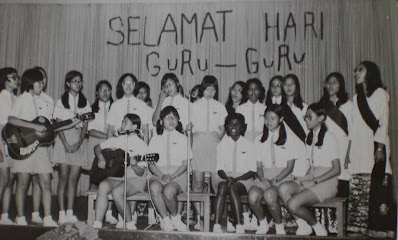 |
| Grandma with some of her grandchildren at her 99th |
I finally grasped what the phrase, sey yuit yah patt means. It’s Cantonese for 28th day of the fourth lunar month, the date of grandma’s birthday.
Every year, mum will look at the Chinese calendar to find which date it falls on in our calendar. Born in 1912, grandma turned 99 on her birthday which we celebrated on 28 May 2011.
When the idea for a celebration was first mooted, some suggested that we wait to celebrate grandma’s 100th but the majority agreed that every day is a bonus with her and we should celebrate grandma at every opportunity. So after weeks of planning, family and friends came together for a special celebration with grandma in Aunty Polly and Uncle Steven’s home in USJ, KL.
 |
Mum helping grandma with a drink while grandma's
brother and sister look on |
It was significant that grandma’s younger brother from Johor Baru and her younger sister, who lives in
Singapore, were able to come.
Likewise, it was important that mum and dad, in particular, were well enough to make the trip.
We know that as our elder family members advance in age, there are fewer opportunities to meet others and we must take advantage of events such as this for the seniors to meet and reconnect with each other.
With the convenience of low-cost flights, frequent-flyer points and timely business trips, we were happy to see Uncle Terry who came in from
Jakarta, cousin Malcolm who arrived from
Sydney in the wee hours that morning and cousin Dennis who arrived from
Shanghai the night before, just for the party and returned by the midnight flight!
My sister, Pearly, who secretly planned her trip from the
UK, gave us a most pleasant surprise when we walked in and saw her!
 |
| Grandma on her 99th birthday |
For a moment, I thought dad was going to have a heart attack because he was absolutely stunned.
I don’t know when the realization actually sank in because he was still looking quite dazed when he sat down with Pearly by his side!
There was not a hint from those who knew about her plans to come and mum, dad and I were taken totally by surprise. Amid shouts of “Surprise!” and camera flashes, Pearly and I fell into each others arms, while I was filled with shock and sheer joy!
When I had sufficiently recovered from the emotional reunion, Aunty Polly asked me to dress grandma up.
While all the commotion was going on, grandma was resting in her room and it was time to pretty her up for the party.
With the help of the maid, I changed grandma’s clothes,
powdered her face and helped to put on her pearl accessories.
 |
| Grandma wearing her pearls |
At 99, grandma’s mental health has deteriorated so much that there are days when she can hardly recognize any one.
This happened to be one such day.
Even as I kept up my one-sided chat with her, she gently smiled and cooperated as best as she could.
I appreciate how Aunty Polly gave me the privilege to attend to grandma personally and it was a very special time for me. Before I presented grandma to the others, I gave her a warm hug and felt a sad rush of emotion because she could no longer reciprocate my hug.
My cousins, who coordinated the organizing of this celebration remotely by email and telephone, did a great job and I’m impressed that the catering included traditional peach buns for special birthdays and longevity noodles! Aunty Polly had organized a lovely tray of cupcakes topped with pretty icing and it was typical of her thoughtfulness to give grandma the birthday girl, a little balloon with the words, “Happy Birthday” on it!
 |
| Traditional peach buns for grandma's 99th birthday |
Then there was a long, long, long photo-taking session. Everyone wanted to take a photo with grandma and I was glad that she quietly cooperated to the best of her ability. When she was tired, she became easily distracted so we had to attract her attention to keep her focused for the photos.
As more people arrived, the photo session seemed almost endless. Finally, we called a halt because it was grandma’s meal time and we took a break to enjoy the sumptuous buffet spread. Grandma ate her soft meal with some vegetables from the buffet that was first blended for her.
For dessert, the peach buns were distributed and it was a pleasant surprise to find tiny little peach buns inside the largest bun.
The cupcakes were also shared as dessert but everyone hesitated to take them because they were really too pretty to be eaten.
In spite of the sudden heavy downpour during lunch, we felt that the party really went very well.
A few days ago I sent a text message to Aunty Polly with birthday greetings because it was then her birthday. Her text reply made me smile because she said, “I’m frying noodles for lunch and will eat it with 99.”
I was very amused by her reference to grandma as “99” because the “99” that we are familiar with is Agent 99, a sidekick of Maxwell Smart, the lead character of an old American sit-com, “Get Smart.” This bungling character, best remembered for using his shoe as a telephone, was clearly a less competent secret agent than Agent 99!
So now when I think of grandma as “99”, she has an all-new image – nothing disrespectful, but one that’s both cool and endearing. Happy 99th birthday grandma and many more to come!
/pl




































